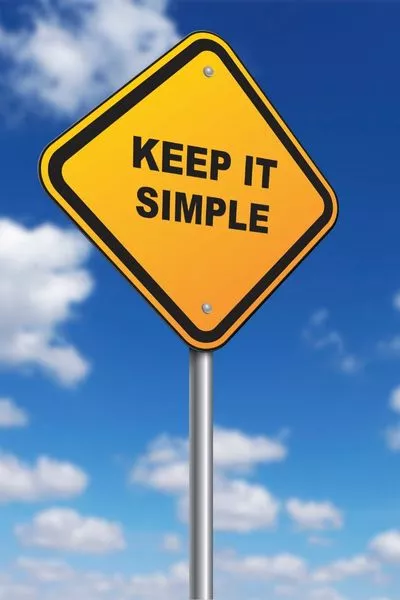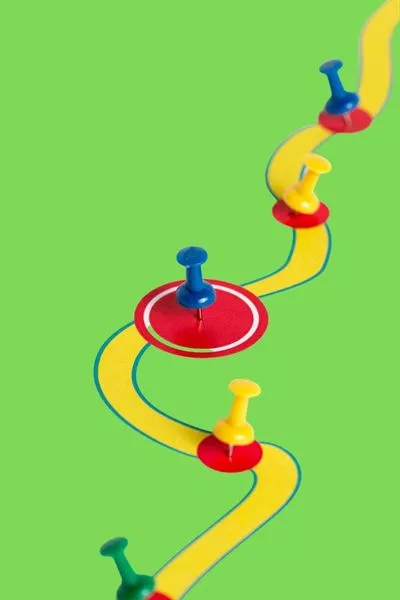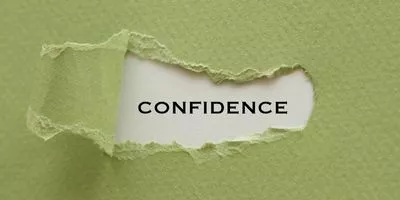That’s the theory, the reality is that the thought of delivering a presentation makes many people sick with nerves, to say nothing of actual stage fright.
It’s often quoted how more people fear public speaking than they do death.
But in reality, would you fear delivering a eulogy at a funeral more than being in the coffin?
Avoiding the pitfalls of Poor Presentations
Bad presentations are all the same – too long, poorly prepared and paced, and overly reliant on visual aids.
Inexperienced presenters cram their slides with text and deliver presentations in a tone that saps the energy from even the most enthusiastic audience members.
How to give a killer presentation
Here are 10 tips that will help you to enhance your presentation skills.

1. Know what a successful presentation looks like (aka know your result!)
What do you want to achieve by the end of the presentation? What will be your evidence of success?
Presentations are always a means to an end. Is that end to obtain ‘buy-in,’ secure a sale, or simply to get an agreement to meet again?
Know the 3 or 4 key things you want to communicate during your presentation. Make sure you hit these core messages several times.
Audience members are unlikely to remember more than 3 or 4 key points. Ensure the audience knows what is expected of them, particularly if you are seeking decisions from them.
2. Answer the questions the audience members are thinking
- Who are you?
- Are you credible?
- Why should I care?
Unless you are already known to the audience, they will want to learn something about who you are, so they can decide whether to engage with you or not. They will engage when they feel they can trust you and when they sense you care about them.
Audience members listen to radio WII FM – What’s in it for me?
Experienced presenters link what they are saying with how it is of benefit to the audience.
In that regard all impactful presentations educate the audience, giving them greater insight into dealing with the challenge they face in their own professional environment.
3. Effective presentation skills – Keep it Simple
“I wrote him a long letter because I didn’t have time to write him a short one.” This quote attributed to Winston Churchill is equally relevant to presentation skills.
Simplicity is the ultimate sophistication; keep your slides simple, with minimal words, and beautiful images.
One slide for every three minutes you are speaking is a good timing guide and no more than 5 or 6 bullet points per slide.
If possible bring each bullet point up separately, so the audience is not reading ahead, but focused on what you are saying.
Use colour and graphics to keep things interesting, but you never want your visual aids to detract from what you are saying, remember the clue is in the term, they are a ‘visual aid’.

4. See your presentation as a conversation
Try to talk with, not at your audience. Buzzwords, clichés, jargon, and emotionless business speak will make the audience switch off. Of course, reading from presentation slides wastes everyone’s time because an audience can read for themselves.
As an impactful presenter, you breathe life into your presentation.
Use simple language, share your own experiences and opinions, show positive enthusiasm and speak from the heart as well as the head.
5. Remember the audience members want you to succeed
All audiences want presenters to be interesting, informative, and ‘entertaining.’
They want you to be comfortable at the top of the room.
An audience will forgive you for having stage fright, using note cards, having performance anxiety, and being nervous because it shows you care, but they won’t forgive you for being boring, or for not doing sufficient presentation preparation.
6. Take the audience on a journey
Effective presentations take the audience on a journey; you tell them a story with a beginning, middle, and end.
You speak about how challenges were overcome, lessons learned, and how everyone lived happily ever after.
Or in business terminology, you balance realism (how things are) with optimism (how things could be.)
This story-telling aspect of presentations is an important skill, it makes the great presenters stand out from the good presenters and it is a key aspect of the presentation skills course I run.

7. Know your opening & close
Engaging presentations start strongly, so know the first two or three sentences that will come out of your mouth.
Plan your opening as part of your presentation preparation, whether it is an introduction, highlighting what you plan to cover, illustrating an example, or posing a question.
You are seeking to get the audience’s attention straight away.
Of course, if you’ve delivered presentations in the past, you probably felt that after a minute or two you got into the flow of it.
Knowing your opening will help you bridge that gap.
A strong close
It might be a summary of the main points, how the audience members can get more detail of what you covered, a reminder of a project or a course start date, a request for feedback, with suggestions for what you could fine-tune, or maybe even ask for an audience member to share a personal example from their own experience.
As part of your presentation preparation, plan to close with something more engaging than ‘any questions?’
Even turning it into a sentence ‘I’d welcome any questions you might have,’ is stronger.
8. Use pauses and silence
Skilled presenters use silence and pause to add to the effectiveness and polish of a presentation.
Short pauses, one or two seconds are for the simple purpose of separating your thoughts.
All you have to remember is to slow down.
Give the audience a chance to absorb what you are saying.
Long pauses, more than two seconds are very powerful.
They prompt the audience to think about what you just said.
It is also a way of regaining the audience’s attention.

9. Remember your timing
Most presentations run over the allotted time.
Why?
Because the presenter fears running out of something to say, they cram their slides with content that is probably not really relevant.
A useful tip is to ask yourself as part of presentation preparation – what must the audience know and what is nice for them to know?
What they must know are the key points of your presentation which should be shared sooner rather than later and emphasised throughout.
What is nice for the audience to know is additional information that you can have in your back pocket to share with them if you have the time.
Boost your Self-Confidence as a presenter
As mentioned earlier, the biggest issue for most presenters is dealing with stage fright, whether they are delivering a work presentation, a speech at a wedding or even presenting as part of a job interview.
10. Confidence-boosting strategies
Here are 3 strategies for managing nerves and boosting your self-confidence as a public speaker.

Visualise yourself delivering a successful presentation
We visualise all the time, but we may have labelled it something else, like worrying.
Our instinctive sense of self-protection prompts us to imagine everything that could go wrong.
This type of contingency thinking can be useful, we imagine the worst-case scenarios which helps us prepare for all eventualities, but dwelling on them, allowing our mind to race doesn’t serve us.
Visualisation as a specific preparation technique is most frequently associated with elite athletes and performers.
However, you can apply the same principles to assist you in your presentation preparation. Purposeful visualisation is about rehearsing in your mind how you want to perform.
You won’t know all the details in advance, but there is plenty you can work with.
You will know the content of your presentation (if you don’t that’s an easily remedied cause of nerves.)
You may know the presentation space and some of the people in the audience. You can visualise yourself at the top of the room. You can predict some of the questions you may be asked.
When you rehearse your presentation in your mind, you are creating a roadmap for success.
Take some deep breaths
When we are anxious, nervous, or stressed we breathe high and fast in our chest.
We are thinking nervous or stressful thoughts and our body is responding.
When we do the opposite of what our body instinctively wants to do, that is, breathing slower and lower, we are sending a mixed message to our brain.
We recognize that we are breathing more calmly, so our minds will relax too.
Taking some deep breaths has the paradoxical benefits of both energising and relaxing us.
They also boost our oxygen intake and enhance our communication skills too as there is more authority in our voices.
Body Language
Picture for a moment someone standing at the top of a room and they dealing with stage fright in front of a live audience.
They might be looking at the floor, avoiding eye contact.
Maybe their arms are folded and their shoulders are hunched.
Perhaps their legs are crossed too or they are shifting from foot to foot.
In this instance, the body language of the person at the top of the room is simply displaying the natural instinct we all have to protect ourselves.
Confident body language
Now picture someone standing at the top of the room looking confident.
How would you know by just looking at them?
They are probably sitting or standing tall, shoulders back and spine straight.
Their arms are relaxed and by their sides or in their lap. They will be looking outwards and making eye contact with the audience.
If you know what the body language of confidence is (sitting or standing straight, shoulders back, good eye contact) then why not put on this ‘uniform of confidence’ purposefully?
Initially, it may feel like you are faking it until you make it, but with practice, you will forge a new habit of body language and all the audience will see is someone who is comfortable in the presentation space and is demonstrating effective communication skills.

Presentations are more than slides
Presentation preparation is not just about putting whatever content you can find into PowerPoint or Google Slides.
These are wonderful tools but as mentioned, visual aids should always aid a presentation, not overwhelm or confuse an audience.
Presentation skills are a subset of communication skills and we only develop these skills through practice and feedback.
So, when you are next delivering a presentation, in addition to having a clear positive intention and a strategy for audience engagement, see it as a classroom, an opportunity for you to assess your own presentation performance.
You do this by reflecting on these two questions that I always view as the handrails on our learning curve –
what did I do well and next time,
what would I do differently?



0 Comments